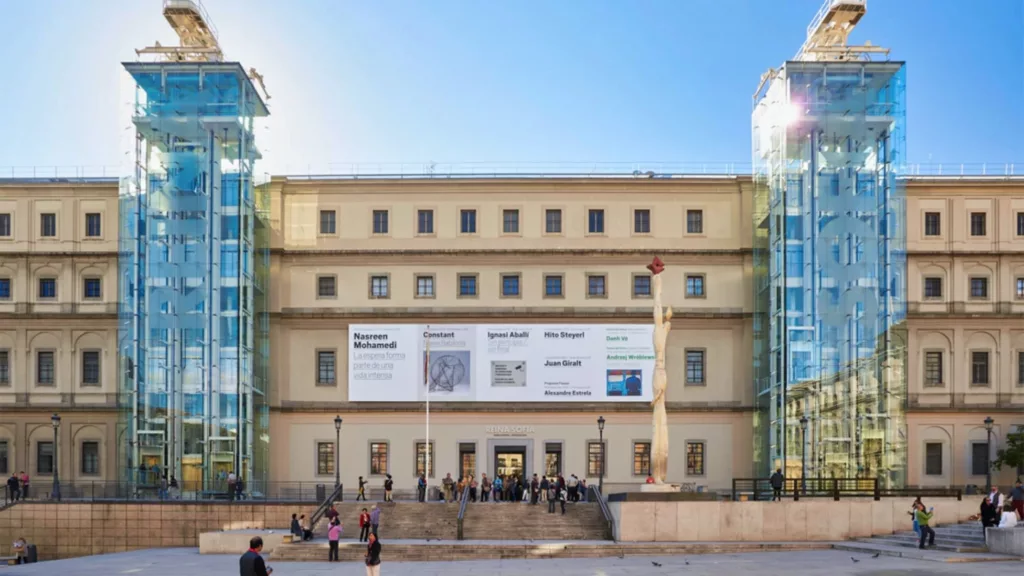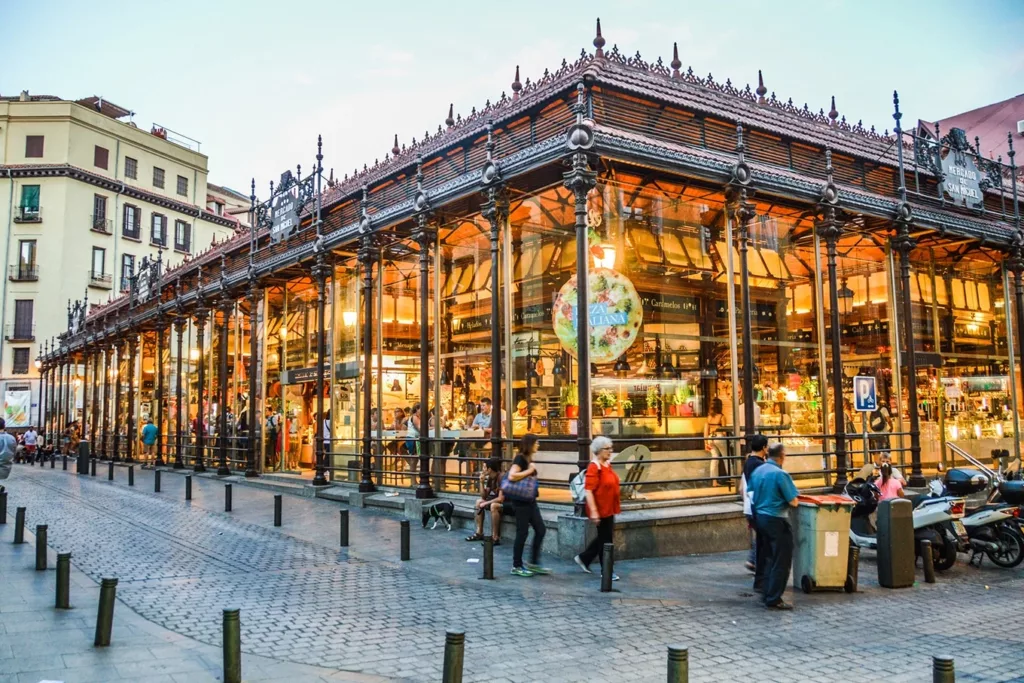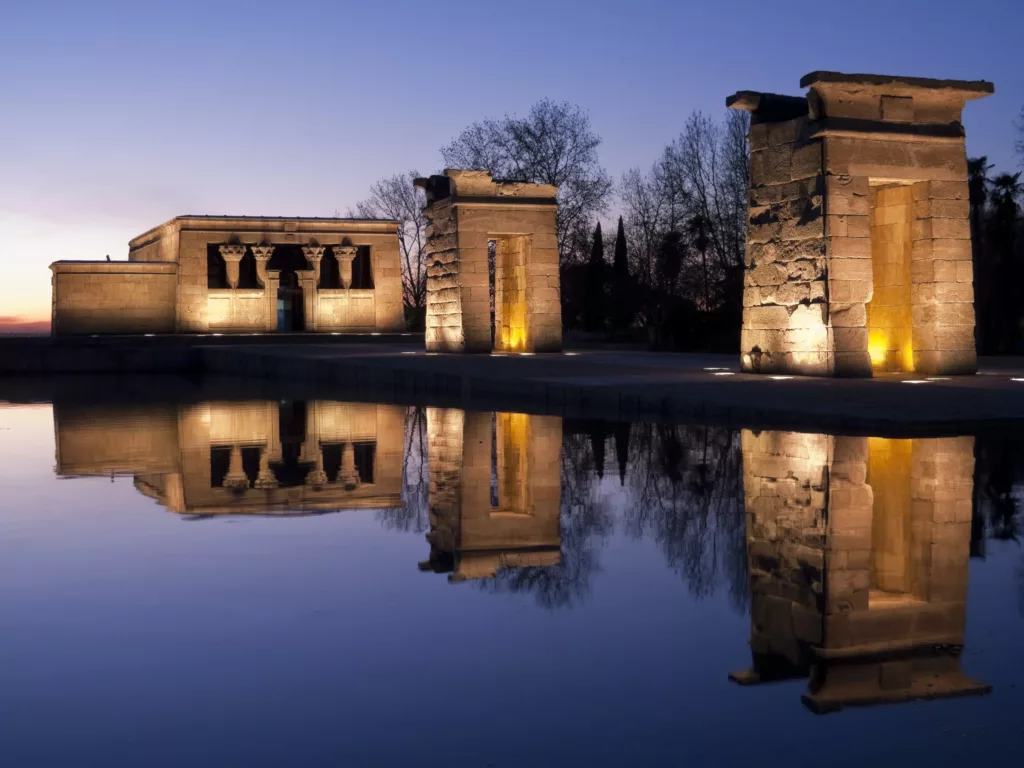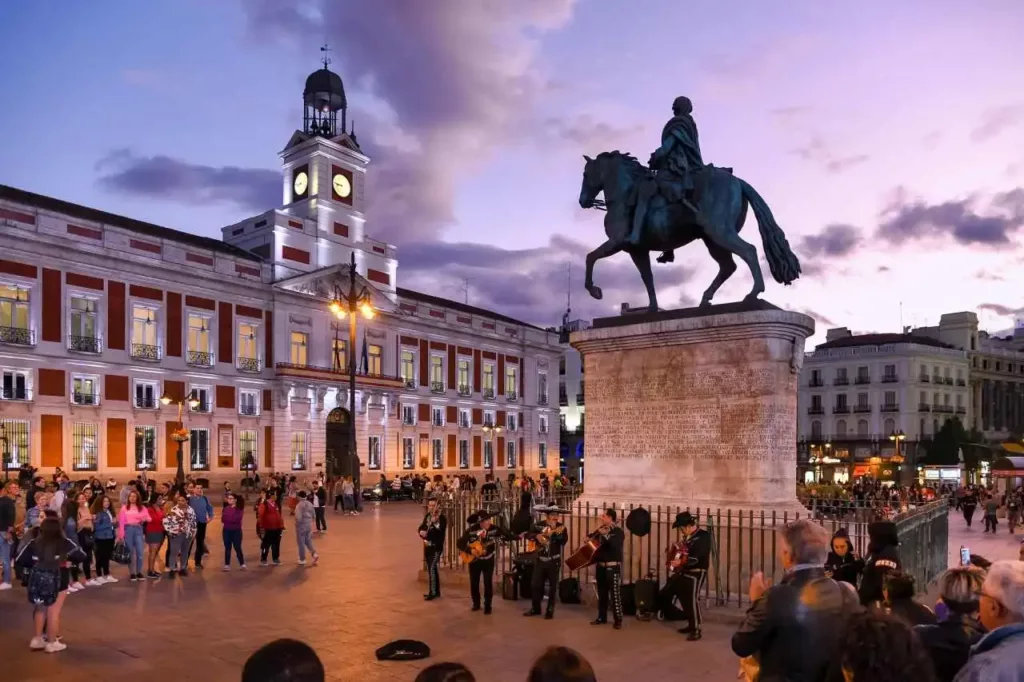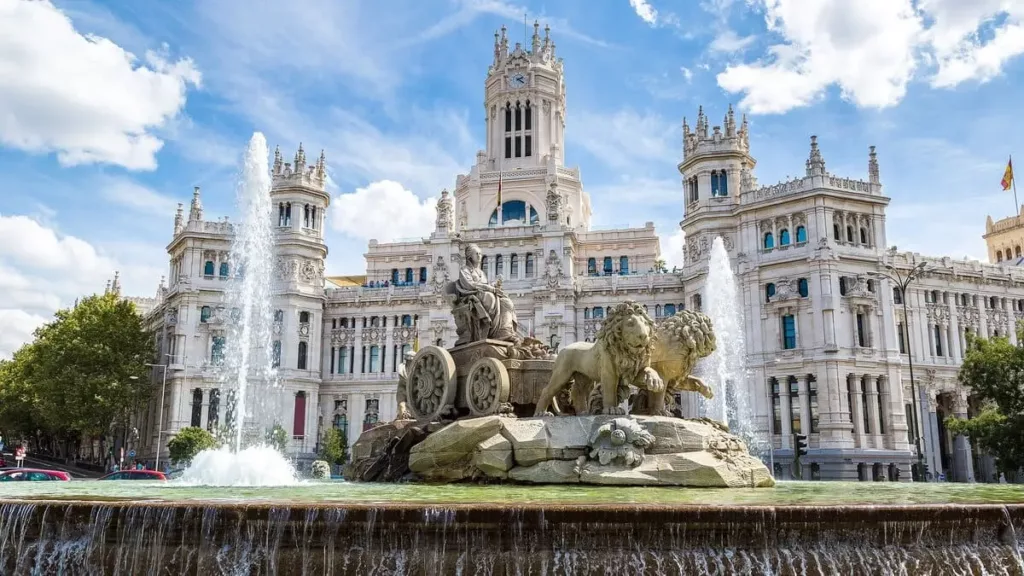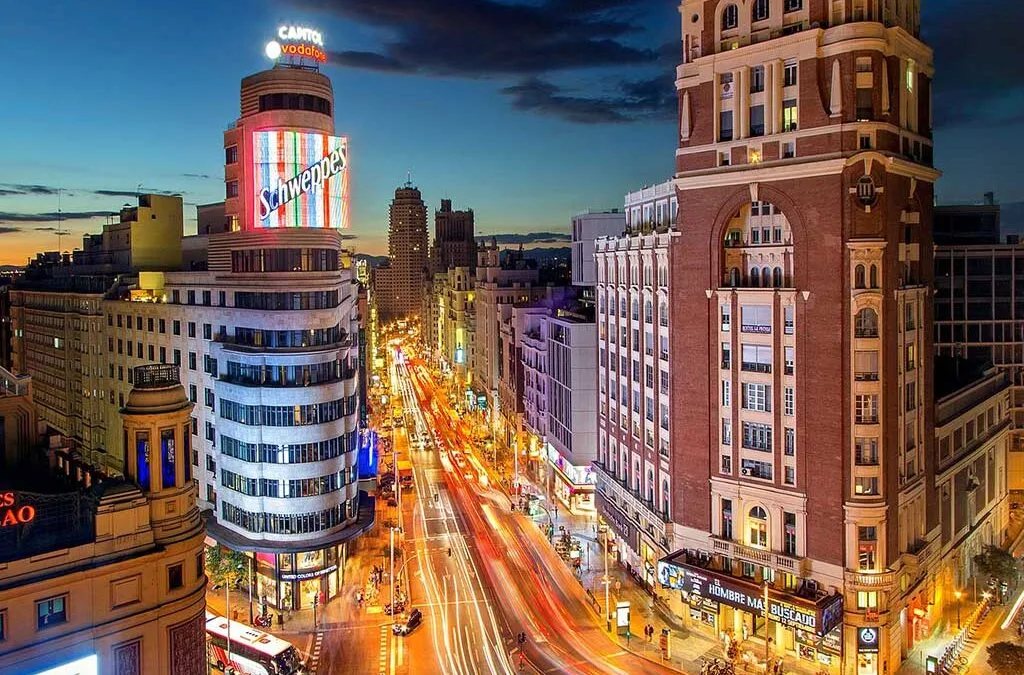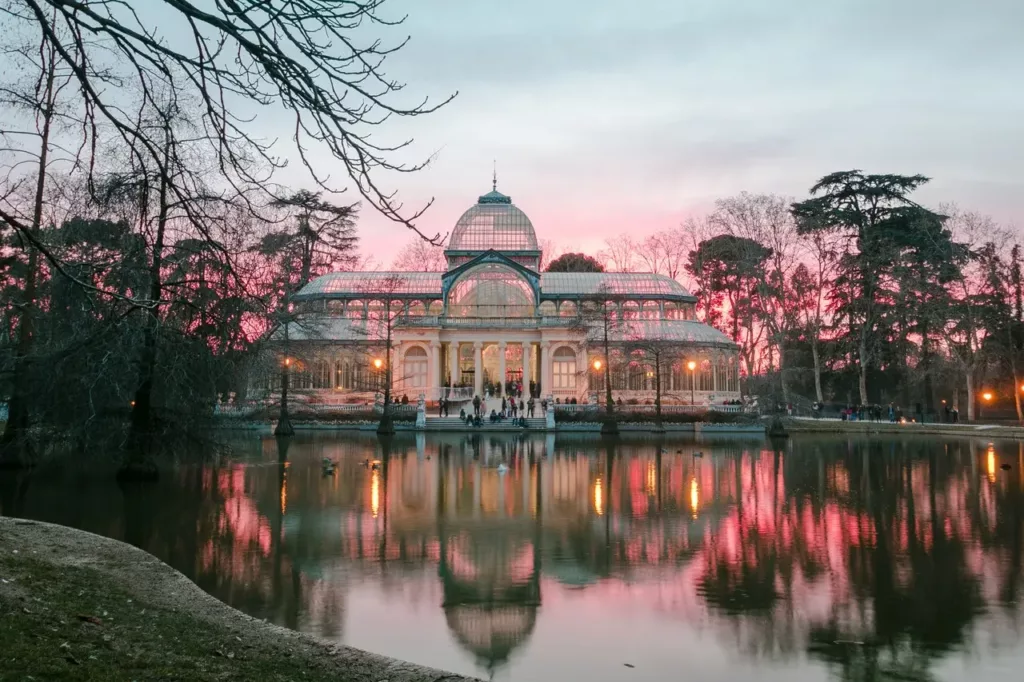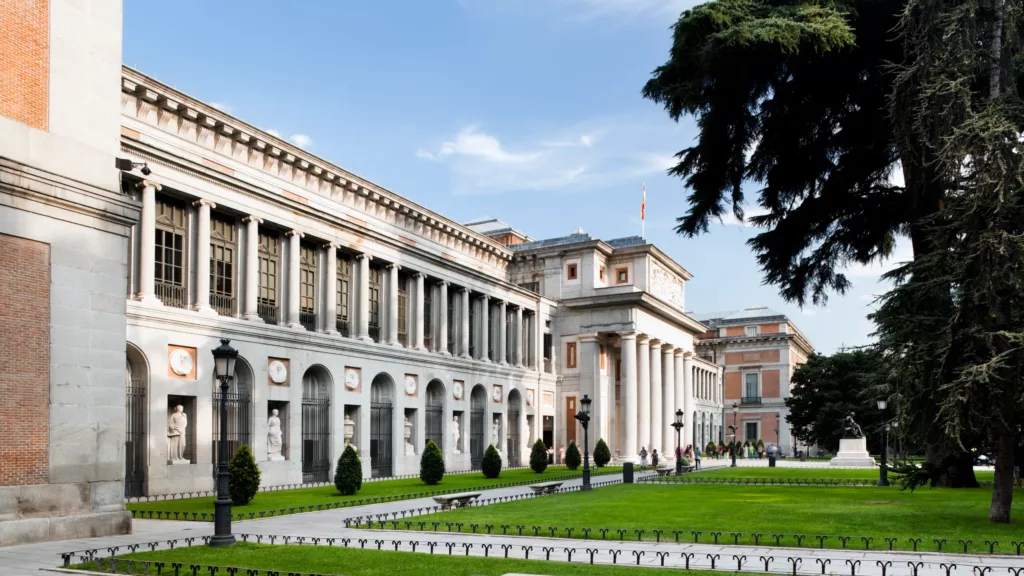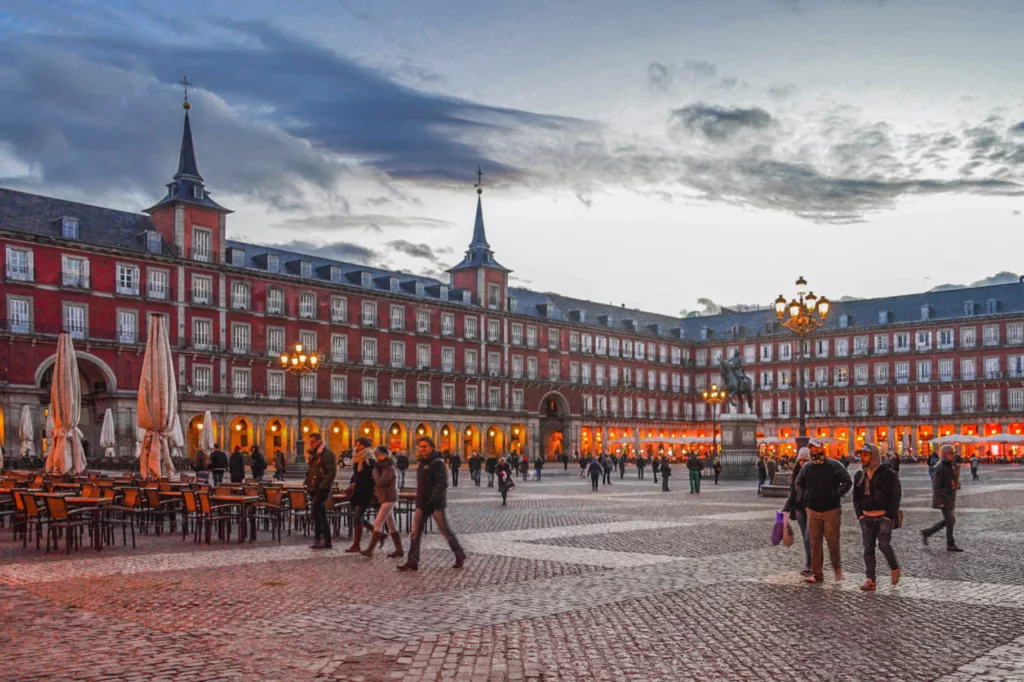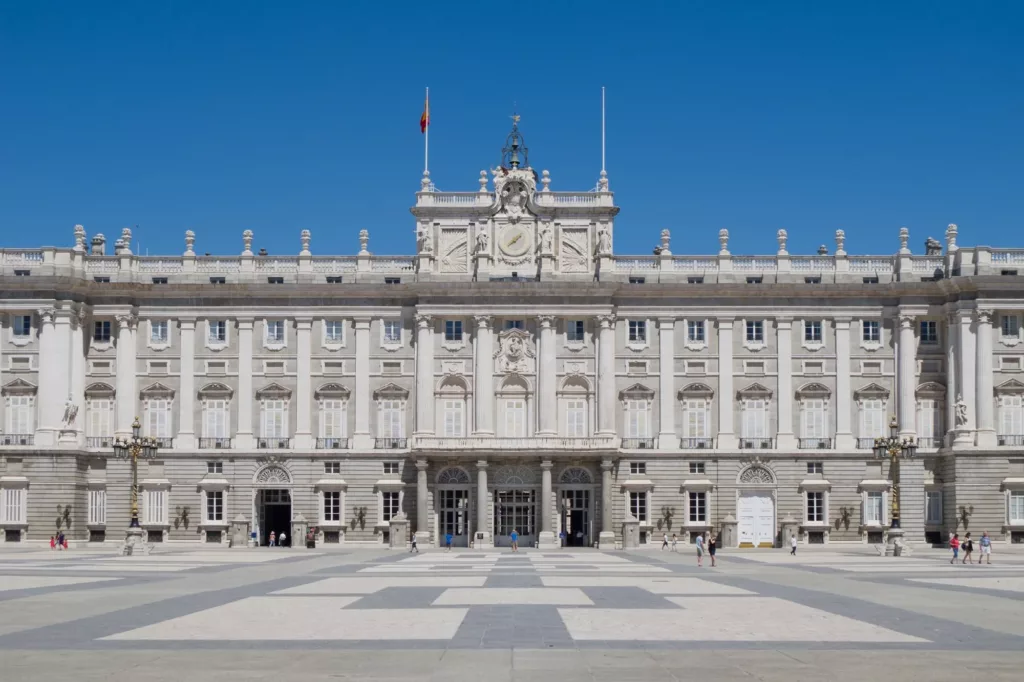Madrid, the capital of Spain, is a city that never fails to impress. Its fascinating history, stunning architecture, vibrant culture, and world-class cuisine attract millions of visitors every year. With so many things to see and do, it can be overwhelming to plan a trip to Madrid. That’s why we’ve compiled a list of the top 10 attractions in Madrid that you simply can’t miss. From the majestic Royal Palace to the buzzing Puerta del Sol, we’ll guide you through the must-visit sites of this incredible city. Get ready to be swept away by the magic of Madrid!
Table of Contents
Museo Reina Sofia
The Museo Nacional Centro de Arte Reina Sofia is the cutting-edge hub for modern art in Madrid, and it was opened by the queen in 1986. The three glass towers that hold the elevators outside this sleek contemporary structure were designed by architect Antonio Fernández Alba. He was inspired by the Pompidou Center in Paris.
More than 23,000 artworks are housed at the Museo Reina Sofia. The collection is a comprehensive survey of modern and contemporary art from Spain. It has outstanding examples of the genre by artists like Joan Miró, Pablo Picasso, Salvador Dal, and Alexander Calder, among many others. The exhibition area is a whopping 39,000 square meters, and the artworks are spread across several rooms.
The facility provides visitors with a bookshop, gift shop, and audio guides. NuBel, the museum’s hip café-restaurant, serves breakfast, lunch, afternoon tea, tapas, and supper daily. And the DJ sets live up the atmosphere for the evening dinners.
Mercado de San Miguel
More than a century has passed since the Mercado de San Miguel first opened its doors as a wholesale food market. Today, this ancient structure stands out as one of the world’s most critical culinary marketplaces. It allows tourists to discover the essence and most important flavors of each region of Spain (read more about Spain Authentic Dishes).
From the best Iberian ham to the freshest seafood and shellfish brought in daily from Galicia to Mediterranean rice dishes and the most beautiful cheeses from Castile, Asturias, and the Basque Country, the Mercado de San Miguel has it all. The underlying factor across the more than 20 stands is a dedication to high-quality tapas and pub meals.
The Mercado de San Miguel is a famous shopping destination for local goods and specialties. Its complex cast-iron construction incorporates glass walls that highlight items such as salted fish and oysters, as well as fresh pasta and desserts.
Because the market is open until 2 a.m. on weekends, it has become a popular nightlife destination where travelers and residents can enjoy beverages, tapas, or appetizers. The venue also hosts concerts, culinary lessons, and private parties.
Having said that, the Mercado San Miguel is not the cheapest location to shop, but it does provide you with a lot of the more typical meals all in one spot, which is pretty handy. In any event, the San Miguel market is still worth a visit and is a must-see site for foodies in Madrid!
Temple of Debod
The Temple of Debod is one of the most unusual things to see in Parque del Oeste, a park near the Royal Palace. On the banks of the Nile, there used to be a temple to the Egyptian goddess Isis. It is possible to visit an ancient Egyptian temple in La Montaa Park. In 1968, Egypt presented Spain with a gift of the Temple of Debod as gratitude for Spain’s assistance in preserving the Abu Simbel temples during the construction of the Aswan Dam.
The temple was constructed in the 2nd century BC by King Adikhalamani in honor of the Egyptian deities Amun and Isis. Unlike other archaeological sites, the temple’s interior maintains its original, well-preserved ornamentation. Relaxing gardens with a fountain and mirrored ponds surrounding the structure truly add enchantment!
Puerta del Sol
The Puerta del Sol, often known as the “Gate of the Sun,” is a significant intersection in the heart of Madrid where thousands of people congregate every December 31 to ring in the new year. Recent renovations have made the area more pedestrian-friendly, making it ideal for people-watching and photo ops among the city’s architectural gems.
The Casa de Correos clock, which serves as the city’s official timekeeper, plays a prominent role in these celebrations. A plaque marks the spot outside the building as “Kilometer Zero,” the origin of the national highway system’s measurement system.
The Madrid’s Bear and Strawberry Tree monument on Puerta del Sol’s western side is widely recognized as the city’s most recognizable landmark.
Restaurants and stores surround the Puerta del Sol neighborhood. La Violeta, located at 6 Plaza de Canalejas, is the perfect destination to get unique souvenirs for friends and family back home!
Plaza de Cibeles
The Plaza de Cibeles, one of Madrid’s most attractive plazas, is flanked by many Neoclassical structures, including the spectacular Palacio de Cibeles, known initially as the Palacio de Comunicaciones.
The Fuente de la Cibeles monument, located in the plaza’s center, is also regarded as a municipal icon. The spectacular fountain represents Cybele, the Roman goddess, riding a chariot carried by lions. The fountain was built in 1782 by Francisco Gutiérrez and Roberto Michel with the intention of giving public water.
On the other hand, the Palacio de Cibeles, located behind the fountain, contains the CentroCentro cultural center, which includes art exhibitions, seminars, conferences, and concerts. The Centro Palacio de Cibeles features two restaurants: the Colección Cibeles café on the ground floor and the Restaurante Palacio de Cibeles on the sixth story, which offers sophisticated dining with great city views. Visitors may also enjoy panoramic views from the Mirador observation deck on the ninth floor of the building.
Gran Via
Gran Via is Madrid’s most famous street. It is home to a plethora of restaurants, bars, retail boutiques, cinemas, and theaters. Gran Via has retained its status as the Spanish Broadway in recent years, despite the closure of several theaters and theaters.
In order to build the Gran Via, more than 300 buildings and 50 streets had to be torn down. This made it one of the most challenging urban projects in Spain. But with this road, Madrid’s city center and the north-eastern part were now better linked.
Today, it is one of the streets in Madrid with the highest nightlife and is known to be the street that never sleeps. Some of the most famous buildings in the country, such as the famed Metropolis building or the Carrion building with its famous Schweppes sign, may be located here.
It is also a central shopping strip, with Primark’s second largest store in the world, as well as other well-known brands such as Zara, Loewe, H&M, Sfera, and Pull and Bear.
Retiro Park
Retiro Park is one of those places that draws neighbors and visitors together. And with more than 15,000 trees, the city of Madrid literally breathes through Retiro Park.
Both tourists and locals come here to relax and enjoy the outdoors or play sports. The wide streets and flat ground make it a great place to learn how to skate, run, or ride a bike. Its more than 15,000 trees make it a natural green oasis right in the middle of Madrid.
Retiro Park was once the royal garden of the old Buen Retiro Palace, which was established by the kings in the 17th century as a place for a spiritual retreat, rest, and vacation. It has a lot of architectural and historical pieces, like the Velázquez Palace and the Crystal Palace. It also has the great basin, which we also call “the lake.” It has a lot of interesting sculptures and fountains, like the monument to Alphonse XII and the statue of the Fallen Angel, which is the only sculpture in the world that looks like Lucifer. There’s also the Fountain of the Galapagos Tortoises, the remarkable Forest of Remembrance, and the Puppet Theater, which is one of its kind in Europe and has a show every weekend.
Prado Museum
The Prado Museum is a must-see for any visitor to Madrid. One of the world’s best art collections is housed in this building, which was created by architect Juan de Villanueva in the 18th century. The famous museum’s layout was simplified after an expansion in 2007.
Over 8,000 paintings and 700 sculptures may be found in the Museo Nacional del Prado. Around 2,300 items from the collection are exhibited across three levels and more than a hundred rooms at the Prado Museum. It might be overwhelming to see everything in one trip, but you can narrow your attention by creating a customized itinerary of must-see masterpieces. You can take a self-guided tour of the museum’s permanent collection by following one of the suggested “routes” created by the Prado.
The collection consists of Spanish paintings from the 12th century to the early 19th century. Unbelievably, more than 140 paintings are in the Francisco de Goya collection. A second masterpiece by Velázquez is a portrait of Felipe IV’s Spanish royal family.
The museum also includes works by Goya, El Greco, and da Ribera, which may be particularly interesting to visitors!
Plaza Mayor
The Plaza Mayor is one of Madrid’s most famous plazas today. Cafes and romantic eateries with outdoor seating along the arcades of this large cobblestone square. The area comes alive with locals and visitors alike in the evenings.
It was initially constructed in 1619 when it was still outside the city’s boundaries and was used for bullfights. In the center of the plaza is a monument of Philip III riding a horse. A tourist information office at the Casa de la Panadera looks out into the square.
This beautiful plaza dates back to the reign of Philip III in the 17th century when it served as a hub for business and civic life and hosted ceremonies like the coronation of a new monarch and the canonization of saints. It was common practice to have bullfights, plays, and knightly tournaments on the plaza.
Famous for its chocolate with churros since 1894, the Chocolateria San Ginés is located at 5 Pasadizo San Ginés, just a short walk from the Plaza Mayor. Elegant touches like marble tables and plush seating delight this chocolate shop and café. The Chocolateria San Ginés is a typical late-night café in Madrid.
Palacio Real
Perhaps the most intimidating thing about the Palacio Real is its enormous size. The Royal Palace in Madrid has almost 2,500 lavishly furnished quarters. From the time of Carlos III onward, the palace, constructed in 1764, was used as the royal home. Alfonso XIII and Victoria Eugenie, the last king and queen to live there, left in the early twentieth century.
This Spanish royal court was built to rival Versailles. While Versailles is now only a museum, the Royal Palace of Madrid is still the official residence of the King of Spain and still hosts formal State functions.
While the palace is still used for formal occasions, the public may see fifty of its most beautiful rooms, including the armory, pharmacy, and the opulent throne chamber, known as the “Salón del Trono,” which is home to a ceiling painted by the Baroque artist Tiepolo.
The Royal Armory of the palace is home to three thousand artifacts from the Middle Ages and is a must-see for history enthusiasts. Armor and weapons used by Spanish monarchs throughout history are on exhibit. Christopher Columbus brings presents from the New World to King Ferdinand, and Queen Isabella is depicted in al fresco in the elegant dining hall.
But among all of these, the chambers of King Charles III are the most exquisite in the Royal Palace. The elegant furnishings and fixtures are reminiscent of the Enlightenment period.
